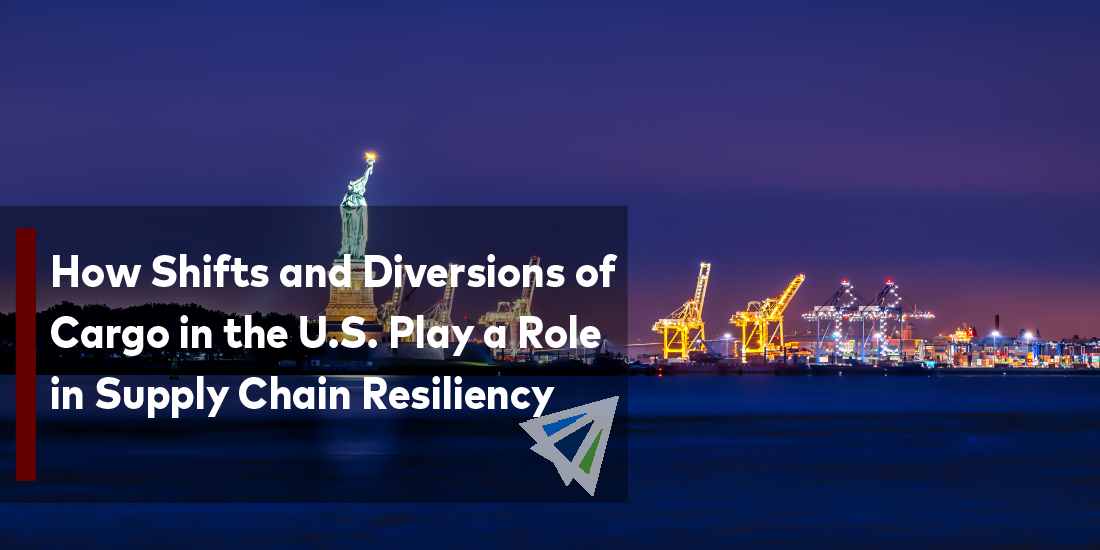Through the last couple of years, there’s been more of a “shift” in cargo. Which has been a widely discussed topic in the industry.
So why is cargo being shifted? Where did all this cargo go? Are these shifts and diversions here to stay? What were some of the reasons for the cargo shifts?
Where Did All the Cargo Go?
During the pandemic, the top 10 U.S. container ports handled 6.8 million more TEUs than in 2019 – data from Supply Chain Dive shows. That specific volume growth was double what those same ports saw two years prior from 2017 to 2019.
But where did that growth get distributed to?
Both the East and the Gulf Coasts saw the most growth from the shifts. Over on the East Coast at the Port of New York and New Jersey, they saw their volumes rise by two million TEUS since 2019. While Port Houston (out on the Gulf), saw an over 984,000 increase from 2019 to the end of 2022.
But the powerhouse that is the Port of Los Angeles still remained the number one port in the U.S. last year, even though some of that cargo shifted out to the East and Gulf ports.
Additionally, the ports in Seattle and Tacoma (that are part of the Northwest Seaport Alliance), and the Port of Oakland were some of the ports that saw a decrease in volume, compared to pre-pandemic.
Will These Shifts and Diversions Stick?
Congestion at ports also played a role in some of the shifts and diversions. Of course, with lots more volume, comes more congestion, which was a significant problem for shippers.
Some major companies, like Costco, even decided to charter their own ships. Though some of those companies have since stopped that chartering.
Additionally, one question that has been largely discussed is if the ports of Los Angeles and Long Beach will over time gain back some of the volumes that they lost.
While others question if some of the ports out West lost that volume for good, especially for shipments that are not time sensitive.
“Some percentage is certainly going to come back,” one analyst said, continuing, “the part we’re going to watch is what percentage of that is actually going to come back. And it won’t just happen overnight.”
Plus, it’s not easy to shift trade lanes, as shipper’s ability to divert cargo can depend on the sailing schedules and inland transportation, just as much as it relies on the chosen ports.
The ports of Los Angeles and Long Beach will continue to play a crucial role in the U.S. supply chain, especially with how close and fast they are to various ports in Asia.
However, what some are suggesting is that shippers may continue to keep some space out west but still add or shift some of that cargo out to ports on different coasts, like the Port of Savannah for instance. Which allows shippers to have more options to help their supply chain remain resilient.
Looking Ahead
Should you have any questions regarding this and how it could impact your shipments, please reach out to our team today.
Additionally, we have our weekly market updates that can provide you with relevant freight news, updates, developments across the industry, and more.
